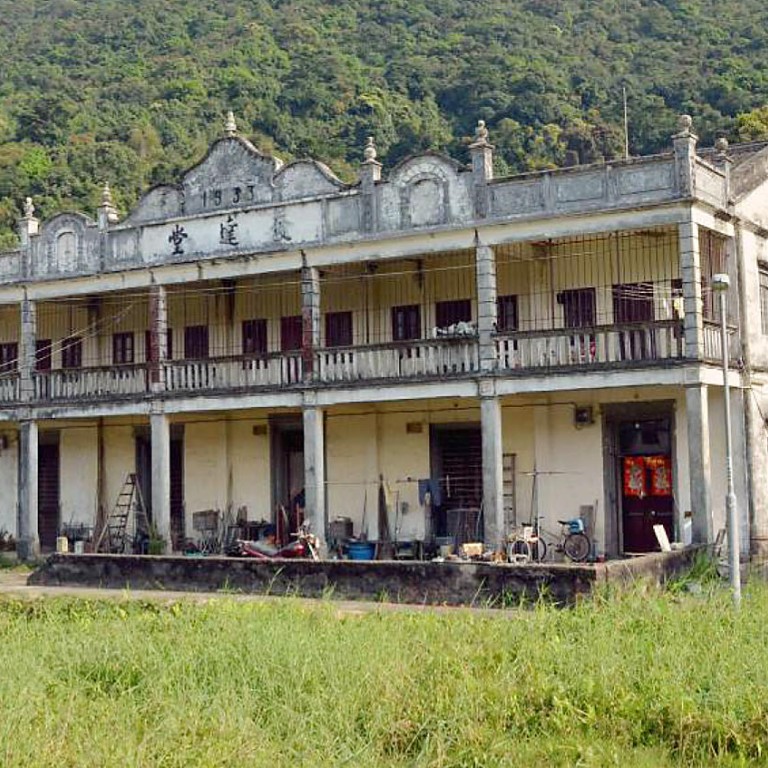
A monument-to-be for pillar of society
The home of a man who helped set up the forerunner to the powerful Heung Yee Kuk looks set to become a monument. Fat Tat Tong - meaning "mansion of wealth" - hits all the high standards required for statutory protection, according to a paper submitted to the Antiquities Advisory Board yesterday.
The home of a man who helped set up the forerunner to the powerful Heung Yee Kuk looks set to become a monument.
Fat Tat Tong - meaning "mansion of wealth" - hits all the high standards required for statutory protection, according to a paper submitted to the Antiquities Advisory Board yesterday.
"Fat Tat Tong … is not only a testimony of the history of a renowned Hakka family in the area, but also an outstanding residential building in Sha Tau Kok in terms of its historic environment setting, scale and blending of Chinese and Western architectural elements," the Antiquities and Monuments Office wrote.
The owners of the building in the village of Ha Wo Hang, near the mainland border, have also agreed to the proposal, it added.
The house was built in 1933 by four sons of Li To-wan, who left Hong Kong at a young age to seek his fortune in Vietnam. He returned a wealthy man.
Li's eldest son Kwan-lan was active in local affairs and in 1924 helped set up the Committee for the Keeping of the People's Property in the Leased Territory of Kowloon. The committee is seen as the predecessor of the New Territories' rural affairs council, the Heung Yee Kuk, which was founded two years later.
Kwan-lan was appointed by the colonial governor of the time one of the three " " advisers for Sha Tau Kok district in 1936.
Lau Chi-pang, a former member of the Antiquities Advisory Board, welcomed the plan to turn Li Kwan-lan's house into a monument and spoke of the significance of the panel he established.
"The name of that committee reflected the villagers' fight against the colonial government, which was trying to take control of the land in the New Territories by charging villagers a premium for building houses.
"The villagers refused as they believed Britain did not own the land, but only leased it from China," the historian said.
The two-storey house is made of green brick, timber and reinforced concrete. It has Chinese-style metal sliding entrances, pillars and an upstairs verandah.
The proposal goes before the advisory board on Wednesday. It will also discuss the heritage impact of turning Chai Wan Factory Estate into public rental housing.

